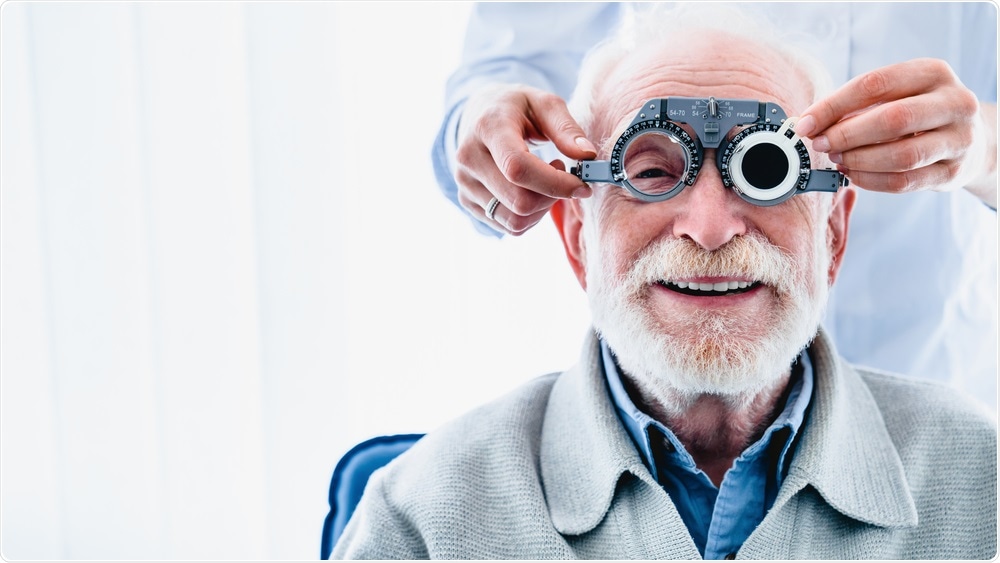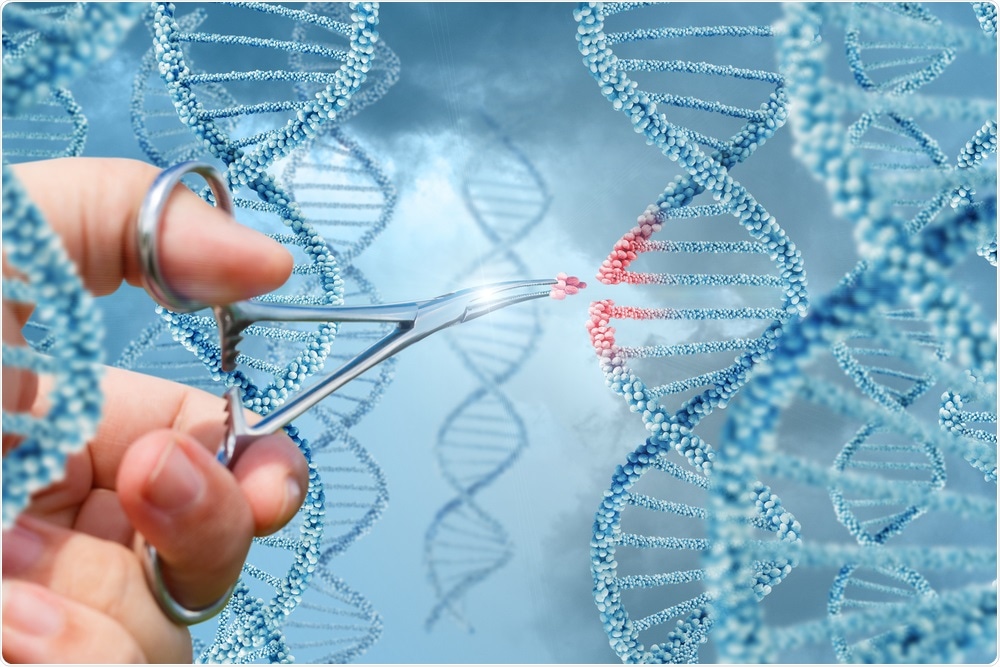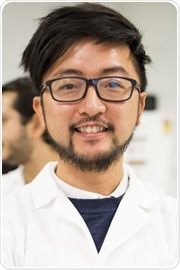To help raise awareness for World Sight Day, AZoLifeSciences speaks to Dr. Raymond Wong about his latest research into eye health and we could potentially 'switch on' sight using gene therapy.
Please could you introduce yourself and tell us about what inspired your career into eye health?
My name is Dr. Raymond Wong. I’m a stem cell biologist by training, and I run a lab at the Centre for Eye Research Australia studying how we can use stem cell technologies to study and treat degenerative diseases affecting the eye.
I was always fascinated by the biology of the eye – the eye basically acts like a camera to capture images and send them to our brain for interpretation. Also, being based at the Royal Victorian Eye and Ear Hospital, I see many patients suffering from different eye diseases.
Often I ask myself the same question: Can we help these vision-impaired patients? I think that is the key motivation for me to continue our research in the hope that we can make a difference in the life of vision-impaired patients.
Research states that nearly everyone on the planet will experience an eye health issue in their lifetime. Other than this fact, why is research into eye health so critical?
Blindness is one of the most feared disabilities and regular check-up to monitor our eye health is important so we can detect any potential problem early on.
Eye research is critical because it can potentially offer better ways to monitor our eye health, detect diseases earlier or more accurately, understand eye diseases and develop better treatment for them.

Image Credit: Inside Creative House/Shutterstock.com
More than a billion people worldwide currently do not have access to eye care services. Why is this and what more could be done to help provide equal access to eye health?
As part of CERA’s role as a WHO Collaborating Centre for the Prevention of Blindness, we aim to help address the global inequalities that lead to millions of people missing out on eye care services because of a shortage of eye care specialists and equipment.
Working with our many partners, we are involved in several projects including the development of new artificial intelligence technology to screen for the detection of eye diseases such as diabetic retinopathy and empower health care workers to deliver eye care services, particularly in low to middle-income countries.
What can our eyes tell us about our general health and wellbeing?
Besides vision, the eye can also provide other indicators to our health, including the brain and cardiovascular system. For example, recent research shows that imaging the eye can offer diagnosis to many neurological diseases, such as multiple sclerosis or stroke.
The teams at the Centre for Eye Research Australia are working on using eye imaging for the detection of Alzheimer’s disease, providing a non-invasive diagnostic method to detect Alzheimer’s disease early and artificial intelligence screenings to detect those at higher risk of stroke.
The theme for this year's World Sight Day was #LoveYourEyes. The message aims to ensure people are aware of their own eye health. Why is this message important and what can people do to love their eyes and ensure their eyes are in good health?
Raising public awareness to look after their own eye health is a very important point. Many eye diseases can be avoided or treated if we detect them early on. We talk about the 4 Ps to ‘love your eyes’ – Prevent, Protect, Preserve and Prioritise, and the International Agency for the Prevention of Blindness offers some great tips for doing that (www.IAPB.org). You can also check out the Centre for Eye Research Australia website for tips on keeping our eyes healthy (https://www.cera.org.au/eye-health-resources/).
For example, many eye diseases can be prevented by adopting a healthy lifestyle, for instance eating a balanced diet, cutting down on smoking and drinking, maintaining a healthy weight, and exercising. For ‘Protection’, we can wear protective eyewear such as sunglasses that protect us from harmful radiations, cut down on screen time, and take regular breaks to avoid eye strain.
To ‘preserve’ our vision, we should get a regular eye examination. This will ensure that any eye problem can be detected early on and deal with medically.
Finally, we should ‘prioritize’ our eye health, putting eye exams as part of our routine medical check-up, and don’t ignore any warning signs that indicate any potential vision problems. Also, we need to spread the message and tell your family and loved ones to care for their eye health.

Image Credit: puhhha/Shutterstock.com
How does irreversible vision loss and blindness occur?
The retina is a complex tissue at the back of our eye that consists of many retinal cells with different roles in vision. For instance, the photoreceptors are the light-sensing cells that pick up light signals and convert them into electrical signals, which are then transmitted to other neurons and eventually the optic nerve relay these signals to our brain, and we interpret that as an image.
Degeneration of any retinal cells involved in this process will cause a problem and lead to irreversible vision loss. This occurs in rare inherited retinal diseases like retinitis pigmentosa or Stargardt's disease and also more common conditions, with a more complex genetic profile, such as age-related macular degeneration (AMD).
Currently, there is no cure once these photoreceptors are lost. Why is this?
Many cells in our body don’t replenish following an injury or degeneration in diseases. This includes the photoreceptors which are the critical cells in the retina that sense light and once they are lost currently there is no cure to blindness.
In this regard, regenerative medicine is an exciting approach to address this problem, by regenerating and replacing the lost photoreceptors to improve or restore vision in patients.
New groundbreaking research aims to reprogram stem cells and turn them into photoreceptors, restoring sight. How would this work and what research is currently being carried out?
Yes, there is some exciting research development in this area. Using a Nobel Prize-winning technology called cell reprogramming, we can now turn one cell type into another cell type by switching on a set of genes. Cell reprogramming has been applied in eye research.
Recent research showed that cell reprogramming can stimulate the stem cells in the retina (called the Muller glia cells) to regenerate other retinal cells in preclinical models, including the photoreceptors and the optic nerve cells.
My research aims to develop cell reprogramming technology to turn Muller glia cells into photoreceptors by switching on the right set of genes.
We are currently testing this technology in preclinical models to translate our findings to the clinic. If successful, this could be available as a new gene therapy as an injection to the patient’s eye which stimulates retinal regeneration and improves/restore sight.
Do you believe that this research will hopefully lead to gene therapies that have the potential to treat blindness?
Yes, that is certainly the goal of our research. Gene therapy to treat blindness is a reality now, in recent years Luxturna become the first clinically approved gene therapy for inherited retinal diseases. This supports the potential and safety for gene therapy to treat blindness, and there is a lot of excitement in developing new gene therapies to treat other retinal diseases.
We are hoping that our research can lead to a new gene therapy to stimulate regeneration of the retina in order to treat blindness.

Image Credit: Natali _ Mis/Shutterstock.com
The ongoing COVID-19 people has shown that when people work together, scientific and medical advancements can be made quickly. How could this level of collaboration be applied to eye research and what benefits would this bring?
The problems that we address in eye research nowadays are often highly complex and requires many groups with different expertise to work together to come up with innovative solutions. Collaboration is a key to speed up research and different experts often provide new perspectives and ideas to solve the problem.
My lab collaborates with many groups in Australia, Europe, the US, and Singapore with a range of expertise in molecular biology, system biology, stem cell biology, and ophthalmology. We are fortunate to have fantastic collaborators helping us and this is certainly very important for our ongoing research.
Where can readers find more information?
Please check out the Centre for Eye Research Australia (www.cera.org.au) for more information on our Hope in Sight Giving Day.
For tips to keeping our eyes healthy, please check out the websites for the Centre for Eye Research Australia website (https://www.cera.org.au/eye-health-resources/) and the International Agency for the Prevention of Blindness (www.IAPB.org).
To find out more about the research in my lab, please check out (https://www.cera.org.au/research/cellular-reprogramming-research/).
About Dr. Raymond Wong
Dr. Raymond Wong is a Principal Investigator at the Centre for Eye Research Australia (CERA), the University of Melbourne, and a Guest Professor at Shenzhen Eye Hospital (China). He is a stem cell biologist specializing in cell reprogramming and stem cells in eye research.
He completed his Ph.D. in stem cell biology at Monash University and was awarded a California Institute of Regenerative Medicine Fellowship to pursue overseas postdoctoral training at the University of California Irvine (USA), and a Visiting Fellow Award to train at the National Institutes of Health (USA).
In 2013, Dr. Wong joined CERA with the support of a Cranborne Foundation Fellowship and subsequently established the Cellular Reprogramming Unit with the support of a MAWA Fellowship and a New Investigator Grant from the National Health and Medical Research Council.
Currently, Dr. Wong’s research focuses on understanding the genetic signals that define retinal cells and using cell reprogramming and stem cell technologies to study and treat retinal degenerative diseases.